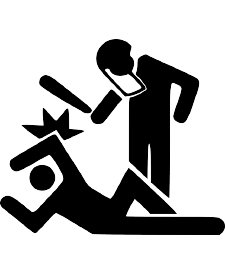 In Toronto on April 23, 2018, Alek Minassian intentionally drove a rented van into pedestrians, killing ten and injuring at least 15. Later the same day, Constable Ken Lam of the Toronto Police Service arrested Minassian after a brief, tense standoff. As seen in a widely circulated video, Minassian dared the officer to shoot, and feigned drawing a gun, most likely to commit “suicide by cop.”
In Toronto on April 23, 2018, Alek Minassian intentionally drove a rented van into pedestrians, killing ten and injuring at least 15. Later the same day, Constable Ken Lam of the Toronto Police Service arrested Minassian after a brief, tense standoff. As seen in a widely circulated video, Minassian dared the officer to shoot, and feigned drawing a gun, most likely to commit “suicide by cop.”
Constable Lam, however, did not shoot. Instead, he took specific steps to de-escalate the confrontation, and arrested Minassian without further bloodshed. Commenters praised his actions, contrasting them with many police confrontations in the U.S., where even unarmed suspects are killed in a hail of bullets. According to the U.S. Department of Justice, “law enforcement officers should use only the amount of force necessary to mitigate an incident, make an arrest, or protect themselves or others from harm.”
The use-of-force continuum begins with the mere presence of the officer. It then progresses to verbal requests, commands, non-lethal physical tactics or weaponry, and ends with lethal force. Suggested reasons for over-reliance on lethal force by U.S. law enforcement include racism, an assumption that suspects are armed and thus dangerous to the arresting officers, low rates of prosecution for alleged police brutality, an American culture of violence, a police culture of intimidation, and police training issues.
Regarding the last of these, only two days prior to Lam’s arrest of Minassian, Douglas Starr wrote an opinion piece for the New York Times arguing that police have a lot to learn — from hospitals. Starr notes that hospital workers often deal with volatile people, yet are not permitted to attack, shoot, or otherwise harm them. As a result, these institutions have developed techniques for de-escalating potentially violent situations. Courses in “managing assaultive behavior” are widespread, and evidence suggests they are effective in decreasing violence in health care settings, for example by defusing it at a verbal, pre-physical stage. Since 1993, California law (AB-508) mandates that hospital staff working in behavioral health or emergency departments receive employee training in assault/violence prevention.
While police officers in some western nations, e.g., Great Britain, all receive de-escalation training rivaling that of California hospital workers, most U.S. police officers do not. Such training is not required in 34 states; most police and sheriff departments in those states offer little or no de-escalation training (but a great deal of firearms training). For example, APM Reports compiled a table showing the amount of de-escalation training for police in the Twin Cities metropolitan area of Minnesota, with wide variation from one suburb to the next. Until last year, most police and sheriffs’ departments in Georgia documented less than one hour of training per officer in the preceding five years. Starting last year, however, all Georgia officers are required to take one hour of de-escalation training annually.
The Police Executive Research Forum, a membership organization of law enforcement leaders and academics, is developing a program called ICAT, to standardize de-escalation training nationally. ICAT assists officers in dealing with several types of encounters that too often result in lethal force. For example, those behaving erratically, and perhaps dangerously, due to mental illness or drug abuse often react more favorably to a slower, calming approach. “In many instances, the goal is for the first responding officers to buy enough time so that additional, specialized resources can get to the scene….” Non-firearms incidents, in which a subject is unarmed or armed with a weapon such as a knife or baseball bat “often present officers with time and opportunity to consider a range of responses.” Perhaps most important, ICAT training
focuses on protecting officers from both physical threats and emotional harm…. The goal is to help officers avoid reaching the point where their lives or the lives of others become endangered and the officers have no choice but to use lethal force.
This last point is crucial, as fear and self-preservation typically provoke excessive responses in everyone, including law enforcement personnel. Faced with a threat, the fight-or-flight response takes hold. However, police officers cannot flee and may thus react with lethal force. It takes dedicated training to un-learn this instinctive response, which may lead to over-reaction and unnecessary violence.
In the end, the police are much like the rest of us. We all react as we have learned or trained. We all act to assure our own physical and emotional safety. And unfortunately, we all rush crucial decisions in the face of pressure and stress. De-escalation training is not only an overdue necessity for law enforcement, it would be a highly desirable means to promote nonviolence in society generally. Imagine how different life would be, if instead of reflexively meeting threat with threat, we learned from childhood to de-escalate and calm those who threaten us out of their own agitation or insecurity. Imagine how different our current politics would be.
Yes, there will always be criminals and sadists who stop at nothing but lethal force. However, a drug-addled screamer on the street corner is not such a person. Nor, apparently, is a mass murderer such as Alek Minassian. He was stopped with firm words and a cool head. That should be a lesson to American police officers — and to us all.

Leave a Reply